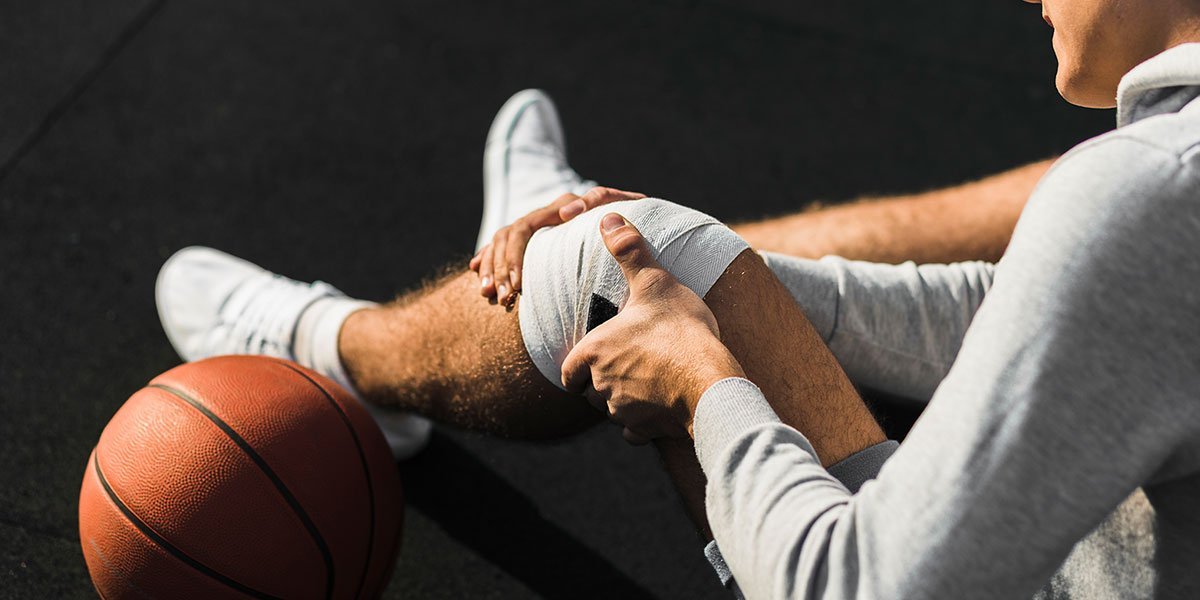7 Common Injuries and How to Prevent Them
Learn more about common injuries and how to prevent them so you can live a healthier, happier life.
Nobody likes getting hurt, but unexpected injuries can happen anywhere and at any time. Just ask our expert physicians at Doctors Express. The team sees an average of 3,800 patients annually for urgent, non-life-threatening injuries alone. While those in the medical field are happy to tend to those in need, the better alternative is for you to take a moment to assess your environment and educate your family on simple injury prevention measures that can save you pain, time and money.
From a fall at home or a sprain while running, below are some of the more common injuries you or your family members are at risk for while going about your daily lives. Each injury is accompanied by tips on how to prevent these burns, cuts, sprains, fractures and broken bones from happening in the first place.
Common Burns
Burns can be caused by a variety of sources: direct heat from a fire, heated water, chemicals, electricity, steam and even sunlight. To avoid burns at home and in the workplace:
- Do not leave cooking items unattended.
- Turn pot handles away from areas people, especially children, are likely to be passing.
- Do not cook while wearing loose clothing.
- Avoid cooking with small children in the kitchen.
- Store matches, lighters and the like away from children.
- Test the temperature of heated water before using.
- Do not leave irons unattended.
- Take precautions when out in the sun, such as wearing sunscreen and protective clothing. Here are tips on how to properly apply sunscreen from the American Academy of Dermatology.
Should a minor burn occur, place the area under cool water until the pain eases. Do not use ice, iced water, or any creams or greasy substances like butter. For more serious burns, contact a health care professional.
Back Injury
It is never too much to lift, until it is. We often overestimate how much strain we can place on areas of our body until an injury occurs. Some of the most common are injuries to the back. Causes of back injury include muscle and ligament strain, repeated heavy lifting and sudden awkward movements. To prevent debilitating and painful back injuries follow these tips below:
- Get active and make healthy changes to your diet. Being overweight can put additional pressure on your back, while exercise can strengthen the structures of your back.
- Avoid heavy lifting if you can. If you can’t, support your back by lifting from your knees, while keeping your back straight. This takes the weight off your back while shifting it to your legs.
- Try to avoid sleeping on your back. As far as possible, turn sideways when you sleep. Investing in a good mattress will also help.
- Work on your posture. Poor posture while sitting or standing can increase your risk for back problems.
- Reduce stress. Believe it or not, overloading on stress can impact on the health of your back. Try stress management techniques like yoga and meditation.
- Choose comfortable shoes and clothing. High heels as well as clothing that constrict the area can result in back pain.
Muscle Pulls and Tears
These injuries usually happen at the gym or while playing sports and is usually the result of improper use of the muscle, overuse or fatigue. Before you load up on those weights or head out onto that field, make sure you:
- Warm up properly before physical activity. Muscles need to become slowly engaged and active prior to going into a strenuous activity as ‘cold’ muscles are more prone to injury. Try five minutes of brisk walking, jumping jacks or other aerobic activity that allows you to move and your heart rate to rise steadily.
- Stay in shape. Properly conditioned muscles are less likely to become injured.
- Have the correct form for your particular workout. Here are a few tips from the Mayo Clinic on how to properly lift weights.
Cuts
Cuts can occur in the kitchen at home, while handling machinery at work, or while children are at play. Tips to avoid getting cuts during these activities include:
- Paying attention. People underestimate the value of keeping an eye out. Children should not be using sharp objects like scissors or knives unsupervised. Similarly, adults operating cutting machinery or using knives at home in the kitchen need to give their work their full attention.
- Keep sharp objects like knives, razors and glass out of children’s reach.
- Objects like mirrors should be securely fastened.
- At work, protocol for handling cutting machinery should be observed.
- Learn how to handle knives safely while cutting and cooking.
- Learn how to store knives properly when not in use.
- As far as possible, children’s playtime should be supervised to cut down on these types of injuries.
Broken Bones
Whether it’s your children home from school on holidays or an elderly relative slipping on the bathroom floor, broken bones are a common injury and a real risk in the home and surrounding areas. Some ways to prevent these include:
- Make sure elderly relatives that may live at home are taking supplements to augment their bone health. The elderly are most at risk for osteoporosis-related breaks and fractures.
- Make stairways and floors as slip resistant as possible.
- If your child plays a sport, make sure they have the right gear and are not involved at a level that may be too advanced for them. This could result in rough play and injury.
- Certain medical conditions and medications make the elderly prone to falls. Monitor their health and medication intake.
- Teach your children the rules of safe play and, as far as possible, make sure they are supervised during playtime activities.
Sprains
Most runners and sporting enthusiasts have had a run-in with this injury. Sometimes, you may just be unlucky enough to step off balance in a poorly lit area, causing an ankle sprain. However it may be caused, here are some tips to prevent this painful common injury:
- Wear properly fitting shoes. Here are tips from the Better Health Channel on how to best select the best fitting shoe for your feet. For example, did you know that you should shop for shoes when your feet are at their largest – at the end of the day or after exercise?
- Be careful when stepping on uneven and/or wet surfaces.
- Stretch before beginning any runs or exercises.
- Using athletic tape may also be helpful in supporting the ankle structures.
- For sports involving the wrists or the elbows, like tennis, using proper form may help prevent injuries in those areas.

